Fine food and wine with Sociando Mallet: 2010, 2009, 2003, 2001, 1995 and 1989
October 10, 2012
Three wine evenings through Germany: Frankfurt, Bonn, Berlin. With sommeliers, wine merchants, wine association tasters, restaurant owners – and just plain old wine lovers with no links to the industry. Three venues where excellent food was paired well with Château Sociando Mallet. We enjoyed six vintages, eight wines: 2010 and 2009 Demoiselle de Sociando (second wine) and 2010, 2009, 2003, 2001, 1995 and 1989 Sociando Mallet.
Some participants in the three venues – Maingau in Frankfurt, The Petersberg in Königswinter, Brenner Restaurant in Berlin – had already visited Chateau Sociando Mallet. Others had had epiphanies: from a discovery of the wine via the 1985 vintage (magnum) to the delicious 1990 vintage. German wine and food forum writer Klaus Nehr published detailed notes from The Petersberg here and here.
Each restaurant had various highlights. My favorites at Brenner included thigh and breast of pigeon served with quinoa. One of the most original servings was a perfectly cooked deer filet with pear polenta … and roasted bits of Macadamia nut. I was worried about the “sweet factor” from the Macadamia, but the meal was delicious – with palate coating pleasure – that it was accompanied best with the rich and opulent 1995, which balanced the opulence of the deer, and the Macadamia.
Notes on the wines: click here
The 1989, which got the best reviews in Frankfurt seemed a touch overshadowed by the deer plate in Berlin. Participants preferred the 1995. So I told guests to take a bit of bread – and taste again. The difference was clear, reminding us that wine can be only as good as its food pairing.
It was not all fun and games. Preparing wine dinners at superb hotels and fine restaurants requires both coordination and preparation. And even “working” the wines just before dinner is served. As you can see in the video below, we spent time double decanting many bottles before dinner started, for example.
Video from The Petersberg
Once properly prepared, wines were paired and served in varied orders. In Berlin, we went “back to the future” in ending with the Sociando 2010 and 2009. It was perhaps not the best decision. Even though some chateaux like to do this, I think it is often better to end with the oldest vintage, as we had done at Petersberg and Maingau.
In any case, the 2010 is such a superb wine. As much as I like the 2009, I think the 2010 may outshine it. A highlight in Petersberg was the rack of lamb: so full of zest and richness, and perfectly paired with the more difficult 2001. But the brilliant 2003 – appreciated at all three venues perhaps the most of all – was paired surprisingly well with large monkfish filet and pearl barley risotto. In Frankfurt, the tannic yet opulent 2010 Sociando was marvelously paired with a rich and flavorful roasted rabbit wrapped with bacon, served with carrots and potatoes, while the 2003 was paired with oxtail and truffle.
The cheese endings at both Maingau and Petersberg highlighted very nicely the 1989, which may have been an overall favorite for many, as well.
It was a great pleasure to present the wines of Sociando Mallet with Pascale Roby, who assumes various important roles for the estate, from commercial to technical direction. Pascale had worked for many years previously under Bernard Magrez, a “Bordeaux emperor” who runs many estates, including the famous Pape Clement in Pessac.
The wines showed well – see tasting notes below – proving a point that one does not have to spend a fortune to obtain high quality from the Medoc. In this case, the northern Medoc. The estate was bought by Jean Gautreau in 1969, just five hectares. Today, it includes 60 hectares where the vines grow to make the first wine – and 25 hectares where vines grow to make the second wine, Demoiselle de Sociando. The second wine includes some 50% Merlot and 50% Cabernet, and it is particularly scrumptious in 2009. So much so that I plan to buy a case or two.
The 2010 Demoiselle is perhaps fresher, with a nose that seems more pure (at first) but not as immediately appealing. The 2009 Demoiselle exudes dark chocolate and ripe red cherry. A very promising start with two excellent second wines. Today, the 2009 Demoisselle is simply seduction in glass.
Sociando Mallet does not do any green harvests, but “bleeds the vats” when the juice may seem a touch dilute. Concentration is reinforced that way. The estates produces about 350,000 bottles per year of the first wine, with another 125,000 or so bottles of the second wine.
Notes on the Sociando Mallet vintages: when bold, I liked the vintage very much; red and bold, even more; and underlined, the best…
2010: Reflecting a certain cool climate aspect, fresh and classic yet substantial on the palate. Ripe fruit. This needs time to come together but is still in its baby phase and not yet closed down – with an excellent integration of the 100% new oak (Sociando is aged only 12 months in new oak). Did this wine shine brightest in Berlin? It came a bit out of context – immediately following the 1989 – but my, my was this utterly delicious: still in its baby primary stage (tasting like a barrel sample), the wine was fresh and deep. Just bottled between May and June this year, it will close down certainly.
2009: The elements are there to make a great wine, but it is just not quite together today. In Frankfurt, it was somewhat disjointed, with alcohol and tannin competing with each other. Certainly ripe and delicious. Needs more time. Served at the end of the meal in Berlin, I found the 2009 overshadowed by the still “baby fresh” 2010. But give this a few years, and it will prove fabulous!
2003: This was the highpoint perhaps overall – taking into account all three evenings. It seemed to be a wine of the evening in Petersberg, and a close second to the 1989 in Frankfurt – and again first in Berlin for most participants. Blackberry and cassis, with notions of menthol freshness. Juicy and crisp, too: does not have heaviness that one can get from 2003. Great wine. I found few people who did not like it. Actually, even those who preferred the 2001, agreed that the 2003 was a great success for the torrid vintage.
2001/2001: This wine is coming together today, but may need more time to melt the tannins, which are somewhat driven by green pepper notes at this stage. I would like to see how it evolves over time – it varied as it sat in glass, firming up and tasting better with time in glass. Certainly accompanies rich meats well. It was a fine match to the rich pigeon thigh and breast in Berlin, although – again – opinions varied. Some could not bring themselves to like the green pepper notes; others loved them, including one participant who preferred it over the 2003. I am rather on the fence with the 2001. Let’s see where it goes in a few years. It was interesting to note that – like most other wines – it changed in glass, in spite of having been double decanted several hours before the dinners.
1995/1995: Another somewhat mixed result, although I have always loved this wine in previous tastings. In Frankfurt – where it did not get as much air as it did in Petersberg – it tasted better. Full-bodied wine, broad, yet also nuanced and just beginning to enter its tertiary phase. It was more diffuse in Petersberg. In Berlin, the 1995 shined brightest, a fine match for the rich game meat filet. So this is borderline red bold, but I think one may have to be careful about not giving it too much air.
1989: This was a beauty, especially in Frankfurt, where the bottles seemed to exude a youthful precision, with tertiary aspects of leather and truffle, but also crisp and clean. A delicious Bordeaux that is a point. Overshadowed (and overcome) by the game meat filet and Macadamia in Berlin however, where the 1995 shined more brightly – again showing us that wine ratings depend so much on what you eat with the wines!
All in all, a great series of verticals. And when you look at the price/quality ratio for Sociando Mallet – and compare it with some officially classified growths from the Medoc – you would be really silly not to buy some wines from this fine estate. The second wine, Demoiselle, for example, can be enjoyed for about €15 per bottle. Depending on the vintage, the first wine – the Château Sociando Mallet – costs anywhere between about €28 per bottle to as much as €150. Sociando Mallet just gets more expensive, the older the vintage – which is a good sign that the wine is both in demand and improves with age. For example, one can purchase the superb 2010 vintage for about €30 including tax per bottle, while the 2003 costs at least €45 per bottle; the 1995 about €50; the more highly rated 2000 fetches at least €60; and older and more highly rated vintages can be more expensive: about €90 for the 1989 and 1990, and as much as €150 for the 1982. So get the wine early and enjoy it over time!

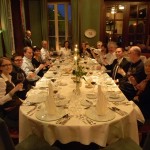



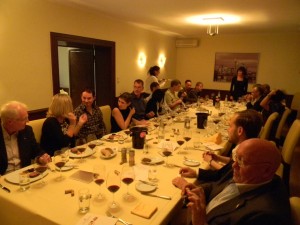
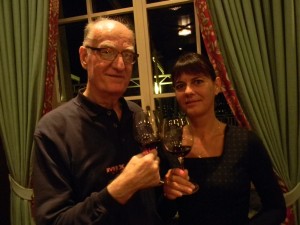

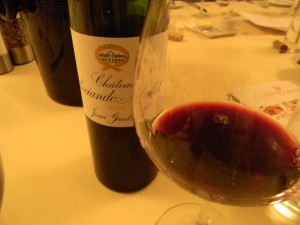
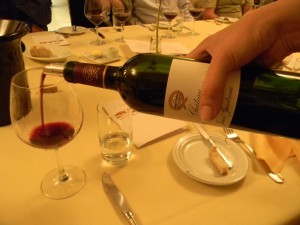
[…] Kakaviatos writes about a recent tasting of several wines from Château Sociando […]
Thanks for the link!
[…] Kakaviatos writes about a recent tasting of several wines from Château Sociando […]
I just wanted to post a quick note to say thanks to you for all the fantastic items you are sharing on this site.